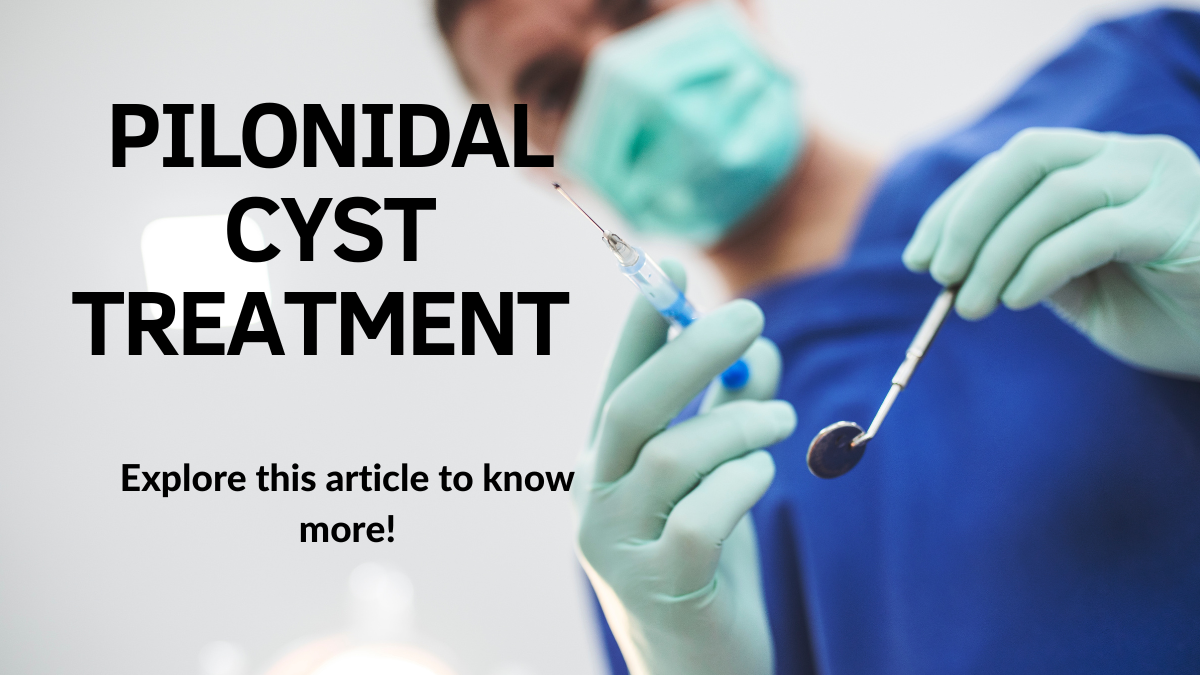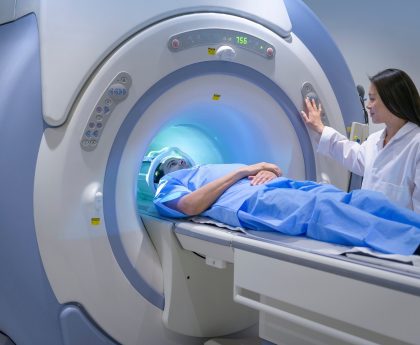A pilonidal cyst is a pimple-like growth that starts in between the clefts of the buttocks. It typically begins in the hair follicle when the hair shaft grows inward. The condition is quite common, but its severity can vary. While some pilonidal cysts self-heal, others turn into painful lumps that affect the overall quality of life. Removal of the pilonidal cyst is the only way forward. A colorectal surgeon will assess the condition and evaluate the symptoms to decide the best feasible treatment for pilonidal cyst. Here’s what a pilonidal cyst treatment plan may look like:
Treatment Pilonidal Cyst
A pilonidal cyst starts as an innocuous growth with almost no symptoms. It is often accidentally discovered by touch. A few home remedies can help at this stage. But if it worsens and gets infected, it triggers various symptoms. Some of the most commonly reported symptoms include pain radiating along the spine, pus discharge, redness and swelling, and fever-like symptoms. This is a debilitating condition that makes day-to-day activities difficult.
The healthcare provider will diagnose a pilonidal cyst after a physical examination. Treatment of pilonidal disease is directly based on symptom acuity.
Home Management
For someone whose pilonidal cyst is harmless, home management along with a few home remedies can help you get rid of the unwanted growth. Meticulously shaving off hair from the area and maintaining adequate perineal hygiene play a major preventive role. Sitz bath and warm compress can make the cyst pop open, reducing the risk of worsening of symptoms. But if the cyst persists, it is best to get it evaluated by a trained physician.
Incision And Drainage
Clearing off the pilonidal cyst of all the unwanted accumulation is typically the first approach by the colorectal surgeon. People with mild symptoms are the perfect candidates. It requires cutting open the mouth of the cyst to carefully drain out the debris. Depending upon the size of the cyst, the doctor may numb the area with a local anesthesia injection. Thereafter, the area is thoroughly cleaned and wrapped up with sterilized surgical gauze.
Proper aftercare is required to ensure that the incision heals properly. This includes maintaining proper hygiene, changing the surgical gauze often until the incision heals completely, and using prescription drugs to manage pain and infection risk. The procedure takes up to three weeks for complete recovery.
Marsupialization
In cases where the size of the pilonidal cyst is big and involves more than one hair follicle or where the risk of recurrence is high, the colorectal surgeon may consider surgical removal of the pilonidal cyst. This method of treatment of pilonidal cyst involves cutting open the cyst and draining it. Once all the hair and pus in the cyst are removed, the edges of the wound are stitched together to create a pouch. The entire process is carried out under the effect of anesthesia. As the cut of the cyst is stitched after the procedure, there is a reduced risk of infection. Also, it eliminates the need for daily gauze replacement. Like basic incision and drainage, Marsupialization also requires pain management and infection control through analgesic drugs and antibiotics. It usually takes up to six weeks for the cut to heal completely.
Rhomboid Flap Technique
For the most severe cases of pilonidal cysts or to prevent the recurrence of pilonidal cysts, the colorectal surgeon may consider a more invasive surgery. The symptoms of the pilonidal cysts are severe and often pose a hindrance in day-to-day activities.
If the colorectal surgeon finds signs of diseased skin that cause pilonidal sinuses, he may advocate the rhomboid flap technique to remove the infected skin. The surgery is performed under proper OT conditions. After numbing the area, the cyst is carefully drained and cleaned. The surrounding skin tissue that shows signs of infection is also removed. The wound is then carefully packed with healthy skin taken from a different location. As the grafted skin packs the hollow wound completely, it reduces the risk of infection and recurrence.
However as the rhomboid flap technique is an invasive surgery, it requires proper post-procedure care. Routine follow-up visits are mandatory during the entire phase of recovery. Complete healing happens when the grafted skin fuses with the surrounding skin. It can take anywhere between six weeks to several months until full recovery.
Final Thoughts
The pilonidal cyst must be effectively managed. Leaving it untreated can lead to complexities and complications. Also one runs the risk of formation of abscess or multiple cysts in the same area. Pilonidal cyst treatments promise effective control by managing the condition based on symptom acuity. Guidance from a certified and trained colorectal surgeon is a must. An expert colorectal surgeon like Dr. Allen Kamrava MD MBA can help diagnose the condition and put forth an appropriate treatment plan based on the severity of the symptoms and the complexity of the case. From benign cysts to the most stubborn cases of pilonidal cysts, his careful evaluation and treatment methodology help you get rid of all. With well-managed follow-up schedules, you are sure to bounce back to work with minimum downtime. Schedule an appointment today and embark upon your journey towards a quick and complete recovery from pilonidal cysts.





